Teres Minor Muscle
Table of Contents
Teres Minor Muscle Anatomy
The teres minor is a slim, narrow muscle within the rotator cuff, located in the shoulder. It also contributes to the rotator cuff, a capsule of muscles and tendons that collectively stabilize the glenohumeral joint.
Origin
It originates from the lateral border and adjacent posterior surface of the scapula.
Insertion
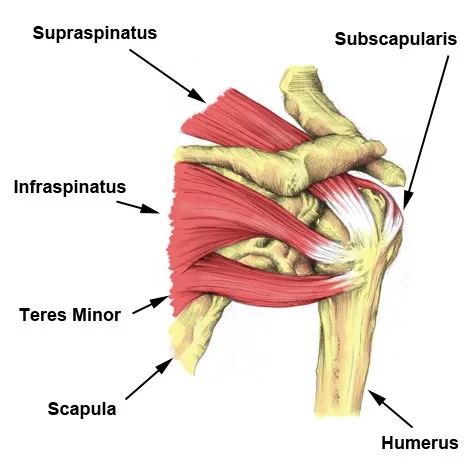
It inserts into the greater tubercle of the humerus. The tendon of this muscle passes across and is united with the posterior part of the capsule of the shoulder joint.
Nerve supply
The axillary nerve (c5,c6) supplies the muscle.
Blood supply
Blood supply to teres minor comes from the circumflex scapular artery and posterior circumflex humeral artery. The former is a branch of the subscapular artery, while the latter stems from the axillary artery.
Action
It causes the external rotation of the arm and also helps in stabilizing the humerus.
Embryology
The myotome of the paraxial mesoderm (somites), which is a muscle of the upper limb, gives birth to the teres minor muscle. At around four weeks, the upper limb bud first emerges and is located across from somites C4, C5, C6, C7, C8, T1, and T2. The myotomes enter the limb bud around week 5 and develop two condensations, one anterior and one posterior. The teres minor and all other intrinsic shoulder muscles originate from the posterior condensation. By eight weeks, the muscular groups are firmly developed.
Clinical Importance
Hornblower’s sign
To determine whether the teres minor has been injured, especially if it has been torn, one might use Hornblower’s sign. The elbow of the patient’s arm should be bent to a 90-degree angle in the scapular plane. The patient will then attempt to form a “field goal” gesture by externally rotating against resistance. If the patient is unable to externally rotate their shoulder, the test is positive and suggests a small pathology.
Quadrangular Space Syndrome
The axillary nerve and posterior humeral circumflex artery are only two examples of structures that are excessively or chronically compressed by quadrangular space syndrome. Overusing the arm, especially while doing the above activities, or suffering a catastrophic injury such as a shoulder dislocation can also lead to the condition. The axillary nerve innervates and the posterior humeral circumflex artery supplies the teres minor in part. As a result, paresthesia, nonspecific shoulder pain, and selective teres minor atrophy can all be symptoms of quadrangular space syndrome.
Rotator Cuff Tendinitis
Tendinitis is a disorder that can cause inflammation or irritation in the tendons of the rotator cuff muscles, especially the teres minor tendon. Generally speaking, tendinitis is a condition caused by overuse; rotator cuff tendinitis occurs by overuse of the arm, frequently in overhead tasks. When the patient raises their arm above their head, they may experience pain or clicking. The course of treatment is conservative and consists of rest, ice, and anti-inflammatory drugs. Exercises that involve stretching and strengthening aid in lowering the load placed on the tendon. For persistent discomfort, cortisone injections are an option.
Compression or impingement of the rotator cuff tendons, including the teres minor, by the acromion, the protruding bone of the scapula, is known as shoulder impingement syndrome. The area between the acromion and the rotator cuff narrows as a result of impingement, which is frequently brought on by repetitive overhead arm motion that irritates the rotator cuff tendons. When trying to lift an arm upward or in conjunction with shoulder weakness, patients may have shoulder discomfort. The course of treatment is conservative and consists of rest, ice, and anti-inflammatory drugs. Rebuilding shoulder strength and range of motion can be aided by physical therapy.
The teres minor Tear
The teres minor is one of the rotator cuff muscles that can rupture. Either acute or chronic tears are possible. Attempting to carry something heavy or falling on an extended arm are two common causes of an acute tear. A chronic tear gradually develops over time and is often a result of the muscle being worn down by tendonitis or shoulder impingement syndrome. Although a rotator cuff rupture cannot be repaired without surgery, it is frequently possible to restore excellent shoulder function without surgery.
Teres minor muscle Exercise
Strengthening Exercise
1. Side-lying External rotation

- It is one of the most effective exercises for strengthening the teres minor.
- Usually performed with a dumbbell as resistance, the side-lying rotation is performed with you lying on your right side to start.
- Hold onto the dumbbell in your left hand. Bend your left arm to a 90-degree angle and rest the elbow on your side.
- Rest your left hand near the floor in front of your stomach.
- Exhale and raise your left hand until your forearm is perpendicular to the floor. Inhale and return to the starting position.
- After completing your desired number of repetitions, repeat the exercise using your right arm.
Stretching Exercises
1. Elbow out rotator stretch

- Start standing or sitting tall. Place your left hand on the middle of your back, palm and elbow pointing out.
- Reach across the front of your body with your right hand and grab onto your left bicep or elbow.
- Gently pull forward.
- Hold for at least 30 seconds and then repeat on the other side.
2. Sleeper Stretch
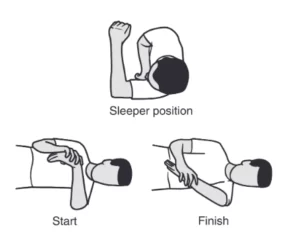
- Lie on your side on a firm, flat surface with the affected shoulder under you and your arm bent, as shown.
- You can place your head on a pillow for comfort if needed.
- Use your unaffected arm to push your other arm down.
- Stop pressing down when you feel a stretch in the back of your affected shoulder.
- Hold this position for 30 seconds, then relax your arm for 30 seconds.
FAQs
external rotation
External rotation of the shoulder joint is predominantly produced by Teres Minor and Infraspinatus. It aids in the shoulder’s adduction and extension. The inferior angle of the scapula is abducted when the humerus is stabilized.
A little muscle called the teres minor may be found deep to the deltoid, above the triceps brachii and teres major, and under the infraspinatus. One of the four muscles that make up the Rotator Cuff is this one.
This muscle’s primary job is to cause arm motions at the shoulder joint. It extends the humerus posteriorly and internally rotates it medially towards the trunk by contracting. Additionally, it aids in keeping the shoulder joint stable.
The axillary nerve innervates the teres minor muscle. The axillary nerve is a branch of the brachial plexus, which is a network of nerves that originates from the spinal cord in the neck. The axillary nerve supplies motor and sensory innervation to the shoulder and upper arm.
References
Juneja, P. (2023, May 8). Anatomy, shoulder, and upper limb, arm teres minor muscle. StatPearls – NCBI Bookshelf. https://www.ncbi.nlm.nih.gov/books/NBK513324/

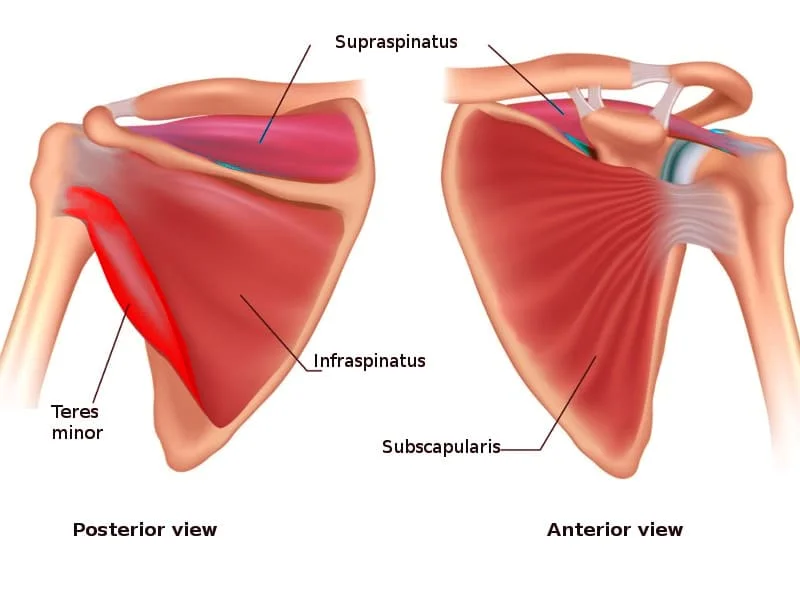
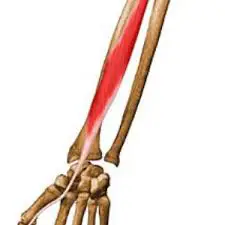

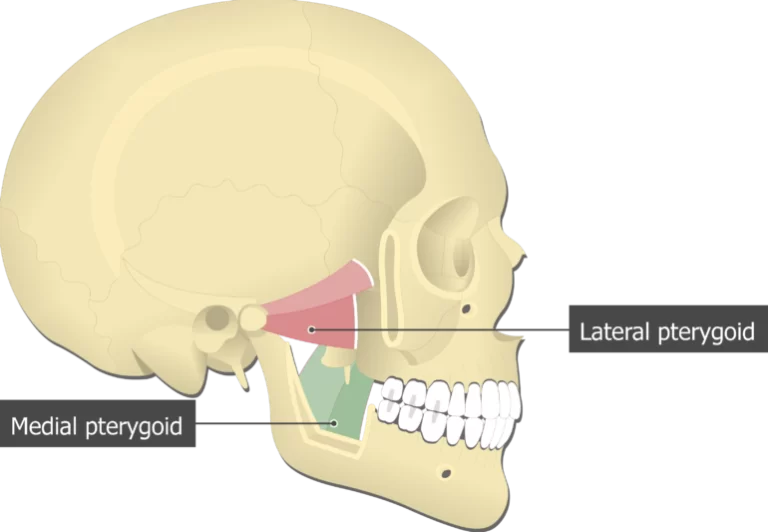
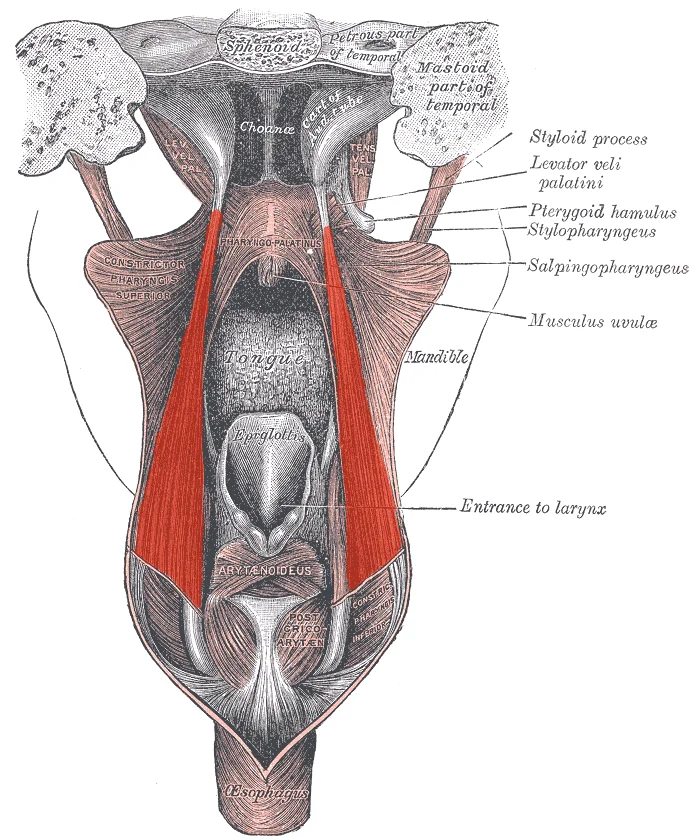
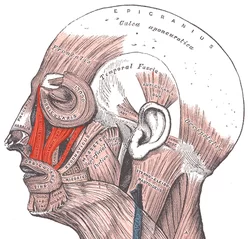
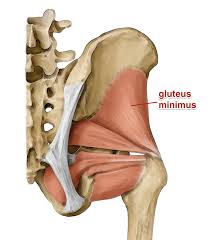
One Comment